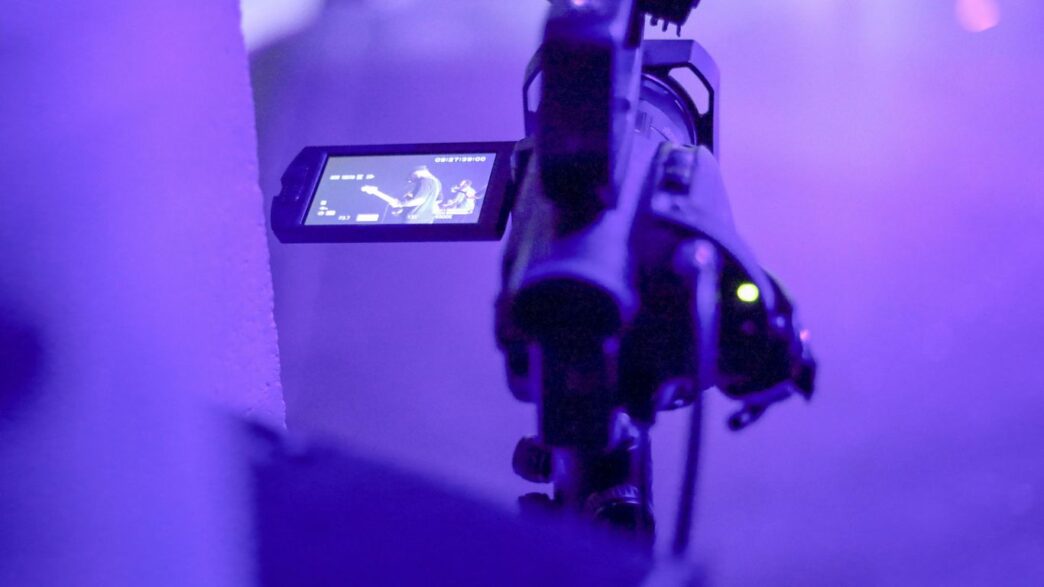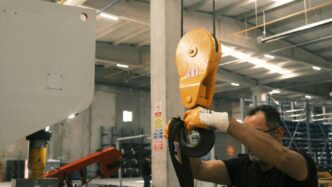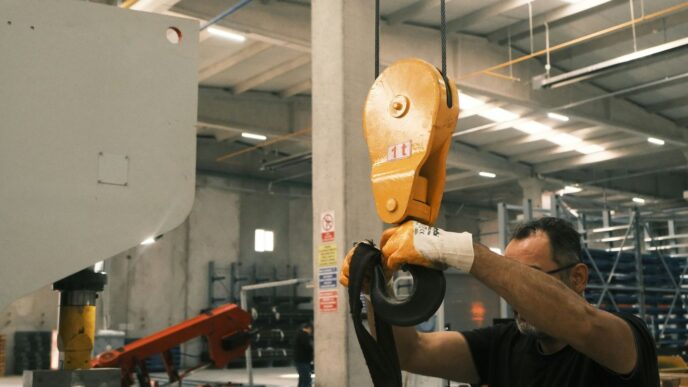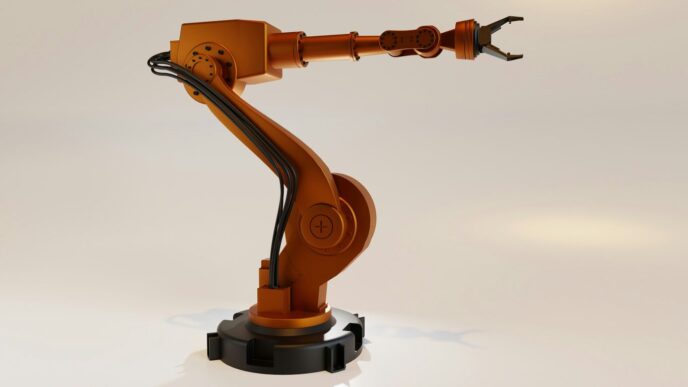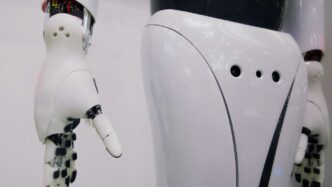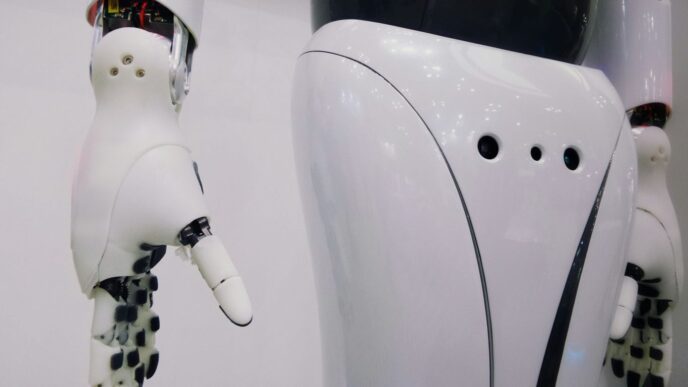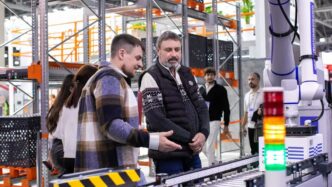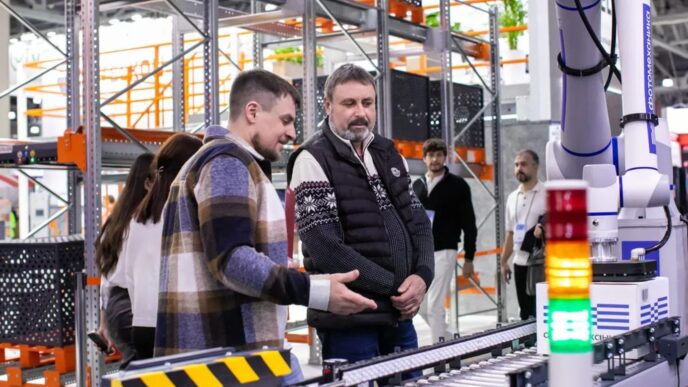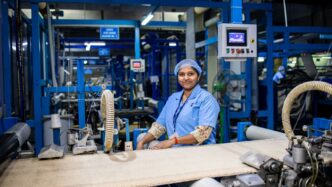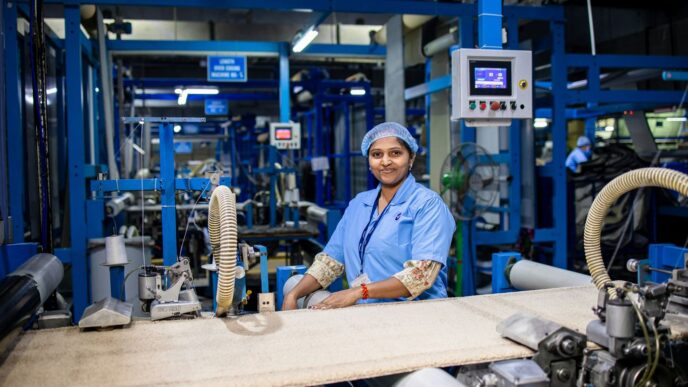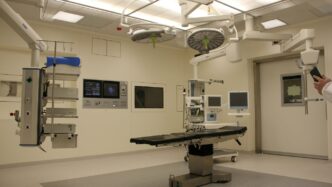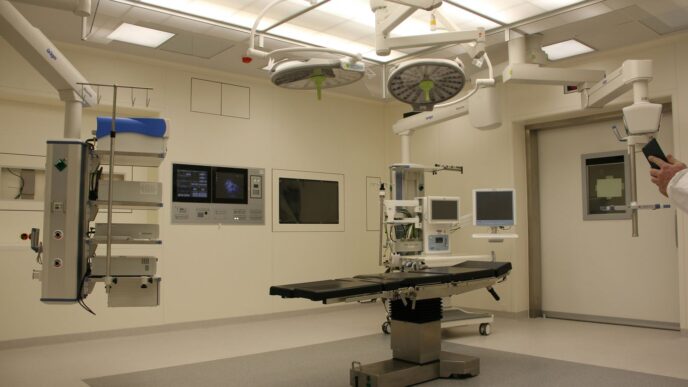Robotics Meaning: A Modern Definition and Its Evolution

Roots of the Term ‘Robotics’
The word "robotics" might sound modern, but its origins are surprisingly old. The term “robot” first showed up in a 1920 play called R.U.R. (Rossum’s Universal Robots) by Czech writer Karel Čapek. In the play, robots were artificial workers – the Czech word “robota” actually means “forced labor.” Then in the 1940s, science fiction author Isaac Asimov started using "robotics" and launched those famous three laws that shape how people imagine robots even today:
- Robots can’t harm humans.
- Robots listen to humans, unless it breaks the first law.
- Robots protect themselves, unless it breaks the first two laws.
But even before these words, humans were obsessed with making mechanical helpers—from Hero of Alexandria’s automatons in ancient Greece to Leonardo da Vinci’s robot knight way back in 1495, which could move its arms, sit, and stand.
How the Definition Has Changed Over Time
Robotics back in the day mostly meant fancy mechanical statues, gears, and pulleys mimicking basic human actions. Once engineering got more serious, steam engines during the Industrial Revolution started replacing some human work with machines that just repeated the same task.
Fast-forward to 1961: Unimate, the first programmable industrial robot, hit the assembly lines, starting the age of automated manufacturing. However, by 2025, robotics is less about standalone machines and more about smart systems that think, interact, and adapt.
Robotics today refers to designing and programming smart machines that can sense their surroundings, process info, and act on their own—or with people. Robots now use artificial intelligence, advanced sensors, and network connections. They learn, talk, and roll out into more areas of life than ever before, from factories to self-driving cars and household devices.
The Role of Robotics in Today’s Society
Robotics has grown from simple machines to something that’s always evolving and stretching into every corner of life. Here’s where you can spot robotics making a difference right now:
- Manufacturing: Robots are everywhere on factory floors, doing more than just welding or painting. They work alongside people (sometimes called “cobots”) for safer, faster production.
- Transportation: The push toward self-driving vehicles is changing how we get around. By 2030, as many as 400 million people could be sharing robotic self-driving cars, making travel more convenient than ever, as highlighted by car-sharing technology and autonomous vehicles.
- Healthcare: Robots assist surgeons, deliver meds in hospitals, or help patients with routine tasks.
- Daily Life: Home assistants, robot vacuums, and even lawnmowers use robotics technology, driven by smarter software, sensors, and wireless updates.
Robotics keeps moving forward, linking new technology and old dreams, and you don’t need to be an engineer to start seeing their impact in your life. The definition is still shifting as robots get smarter and more connected in our modern world.
Key Concepts Behind Robotics Meaning
The meaning of robotics starts to make sense once you look at what actually makes these systems work. Robots aren’t just metal arms or sci-fi movie characters; they’re the result of different types of knowledge coming together in a practical way.
Core Disciplines: Engineering and Computer Science
- Mechanical engineering gives robots their shape, strength, and ability to move. Think gears, motors, and arms — everything that "does the job."
- Electrical engineering deals with wiring, circuitry, and the power supply — like making sure a robot has energy and can communicate between its parts.
- Computer science is the brain behind the operation. Programs and algorithms tell robots what to do, when, and how to adapt if something changes.
You can’t really separate these skills when building robots — they all overlap. In short, robotics is a team effort between multiple branches of science and tech, blending to solve real problems.
Distinction Between Robotics and Automation
Not all automation is robotics, but almost every robot is some type of automation. Here’s a quick way to think about it:
| Aspect | Robotics | Automation |
|---|---|---|
| Flexibility | Highly adaptable, can be reprogrammed for new tasks | Usually set up for repetitive, fixed jobs |
| Physical Form | Tangible machines with moving parts | Not always physical (can be just software) |
| Intelligence | Increasingly smart, can sense and react | Typically less responsive or adaptive |
- Automation: As simple as a conveyor belt. Great for consistency, boring for complexity.
- Robotics: Can be that same conveyor, but with arms that pick, sort, and make decisions on the fly.
Intelligent Automation and Its Impact
Intelligent automation is where things get interesting. Robots aren’t just following scripts—they’re actually making choices based on new info. Here’s what’s different in 2025 compared to a decade ago:
- Machine learning lets robots "learn" from patterns and data, not just repeat old programs.
- Vision systems mean robots use cameras and sensors, not just timers or simple triggers.
- Human-robot interaction is becoming more natural; robots can now respond to spoken commands or gestures.
All these ideas together are shifting how we think about robotics: they’re turning into smarter, more interactive partners, not just automated tools. And honestly, that changes everything about where robots can be used—and how we expect them to behave.
Essential Components in Modern Robotics Systems
Modern robotics systems are made up of several key components that work together to let robots do their jobs, whether they’re building cars, delivering packages, or helping out in hospitals. Every robot, no matter how advanced, relies on these main parts to function. Let’s break them down and see what each one does.
Mechanical Structure and Actuation
The mechanical structure is sort of the robot’s skeleton. It’s what gives the robot its shape and physical presence. Structures can be as simple as a metal frame or as complex as an artificial limb with dozens of tiny joints. Actuators are what make these structures move, a bit like muscles do in animals. They convert energy into motion—things like motors, hydraulic pistons, or even artificial muscles.
Quick list of mechanical and actuation basics:
- Frames: Keep everything held together, industrial robots usually use metal, while soft robots use squishy materials
- Joints: Allow arms, legs, or grippers to bend and twist
- Actuators: Electric motors for smaller movements, hydraulic or pneumatic systems for bigger, stronger actions
Power Sources and Control Systems
Without power, nothing happens. Every robot needs energy, and how they get it depends on the job:
- Batteries: Common in mobile robots and drones
- Wired electrical sources: Used when robots don’t need to move far (think factory arms)
- Solar: Great for outdoor or remote robots
On the control side, robots have a sort of brain. Usually, it’s a combination of dedicated chips and software. The control system takes in signals from sensors, runs the numbers, and tells the muscles (actuators) what to do next. The smarter the control system, the more independently a robot can work.
| Power Source | Where You’d See It | Typical Use |
|---|---|---|
| Lithium-ion batteries | Drones, mobile robots | Lightweight power, good range |
| Plugged-in electric | Factory robots | Reliable, no movement needed |
| Solar | Field robots, explorers | Independence, long outdoor missions |
Sensors and Advanced Feedback Mechanisms
Sensors are like the robot’s senses. They gather information about the world and feed it back to the robot’s brain. These are some of the big ones:
- Cameras and LIDAR: Help robots “see” their environment
- Force sensors: Tell if a gripper is holding something too tight or too loose
- Gyroscopes and accelerometers: Keep track of movement, balance, and position
- Microphones: Let robots listen or pick up on voice commands
Robots use this sensory information to make decisions or adjust their actions on the fly, like avoiding an obstacle or picking up just the right cup. The better the sensors and feedback, the more useful—and safer—the robot becomes in real settings.
So, while robots may seem like magic, they all come down to these main building blocks. Make them work together, and you’ve got a machine that can do some seriously interesting stuff.
Exploring Types of Robots and Their Unique Capabilities
The world of robotics isn’t just about those boxy machines welding car doors together. In 2025, robotic systems have branched into all sorts of shapes, sizes, and specialties. While each type stems from shared building blocks, their abilities and roles keep evolving. It’s not an exaggeration to say robots have found a place almost everywhere. Let’s look at what sets different robot types apart — and what they actually do.
Industrial Robots: Manufacturing Powerhouses
Industrial robots sit at the heart of factories worldwide. They’re the workhorses that manage welding, assembly, painting, and packaging. Unlike early robots that had to be changed by hand every time a new car model hit the line, industrial systems today adapt quickly to new tasks.
- Usually stationary, often mounted on large arms with joints
- Handle repetitive and heavy-duty tasks with high speed and accuracy
- Often operate alongside humans in smart warehouses
Here’s a quick look at industrial robot growth:
| Year | Global Industrial Robot Stock (Millions) |
|---|---|
| 2010 | 1.1 |
| 2020 | 2.7 |
| 2022 | 3.9 |
Humanoid and Collaborative Robots
Humanoid robots are designed to look or act like people. They’re not just for tech expos—even researchers and some care homes see benefits. Their lifelike faces help with trust, which matters in settings where human interaction is key.
Collaborative robots, or “cobots,” are built to work safely right beside people. They’re lighter, packed with sensors to stop if you get too close, and friends to humans on the factory floor. Cobots take the boring, heavy, or risky jobs so people don’t have to.
- Humanoids interact using facial expressions and gestures
- Cobots are easy to program for changing tasks
- Both types lower workplace injuries and boost collaboration
Service and Social Robots in Daily Life
These are the robots helping out in restaurants, airports, hospitals, and even in homes. Service robots run the gamut from floor-cleaning bots to robotic nurses who move supplies or deliver medicines. Then there are social robots—they chat, entertain, and sometimes help teach kids or assist older adults in daily routines.
Here’s what service and social robots usually do:
- Perform repetitive chores (like vacuuming or delivering trays)
- Guide visitors and answer basic questions
- Assist with companionship and remote monitoring
Autonomous and Pre-Programmed Robots
Autonomous robots think and act for themselves. You can spot them dodging people in warehouses, harvesting crops, or driving around as delivery vehicles. With tons of sensors and, often, AI smarts, they can adapt on-the-fly to their surroundings. Pre-programmed robots, by contrast, follow strict routines—like an automatic bank vault door or a robot that always puts the same bolt in the same hole.
Key differences:
- Autonomy: Can make decisions in real time
- Learning: Some can improve with experience
- Dependence: Pre-programmed types stick to one job, autonomous bots can switch it up
Robotics in 2025 is not just about machines that follow orders—it’s about systems that interact, adapt, and solve problems next to us, and sometimes, for us.
Robotics Applications Transforming the World in 2025
Robots have actually become pretty common by 2025, and their uses stretch into all sorts of industries. From hospital rooms to farms and even warehouses or classrooms, robots are taking on jobs that were handled by people just a few years ago. It’s not just about automation anymore—robots are now interactive, adaptable tools that shape how we live and work. Here’s a closer look at how they’re making an impact right now.
Healthcare Innovations and Surgical Robotics
If you visit a hospital these days, it’s not weird to see robots assisting surgeons or helping out with repetitive tasks, like delivering medicine. The newest surgical robots can perform extremely precise movements, allowing specialists to do minimally invasive procedures that used to be impossible. Some robots even help with patient care, lifting heavy loads or disinfecting rooms, cutting down on infections.
- Quicker recovery times for patients
- Less physical strain and risk for healthcare workers
- Improved surgical accuracy for delicate cases
Agricultural Automation and Drones
On the farm, you’ve got drones and rovers working hard, especially in larger operations. These machines do a surprising range of things—spraying crops, checking plant health, even picking fruits.
Here’s a quick comparison:
| Task | Human Labor | Automated Robots (2025) |
|---|---|---|
| Crop inspection | 10 hours | 2 hours via drone |
| Harvesting fruit | Manual only | 80% automated |
| Spraying fields | Manual | Fully autonomous |
This shift means higher yields and less chemical waste. Plus, robots can work day or night, and they’re getting good enough to tell weeds from crops on their own.
Logistics, Manufacturing, and Public Safety
Warehouses might be where robots shine brightest these days. Driverless forklifts, inventory drones, and mobile bots zip around, keeping operations moving almost 24/7. It’s boosted productivity and slashed human error, while public safety gets a boost from things like robotic security patrols and disaster response bots. Human-like robots with advanced features are even being used for tasks too dangerous for people.
- Faster order fulfillment, especially for e-commerce
- Round-the-clock safety patrols
- Robots handling toxic spills or exploring unsafe structures
Entertainment, Education, and Space Exploration
It’s not all business—robots are now regulars in classrooms and living rooms, too. Kids interact with social robots that read stories and help with homework. In entertainment, robots are behind interactive exhibits and sometimes even feature in live performances. Space agencies keep sending sophisticated robots to Mars and beyond, uncovering stuff humans just can’t reach yet.
- STEM learning with programmable kits
- Interactive museum guides
- Robotic rovers surveying planets and asteroids
The expansion of robotics into all these areas doesn’t just change tasks—it’s slowly reshaping how we think about work, safety, and even fun. There’s some worry about job loss, but just as many new careers are popping up in programming, maintenance, and design of these machines. As robots get smarter and more accessible, expect their impact to keep growing.
Artificial Intelligence and the Expansion of Robotics Meaning

The combination of artificial intelligence and robotics has totally changed what robots can actually do. In the past, a robot might have just repeated one set of moves over and over. But now that AI is in the mix, you’ll see robots acting smarter, responding to new situations, and even learning as they go. AI isn’t just a bonus feature; for a lot of the coolest robots, it’s the very thing that sets them apart from basic automation. Here’s how it plays out right now.
Machine Learning and Adaptive Intelligence
Machine learning gives robots the power to improve at tasks without getting extra code updates from a human programmer. Basically, the more data they get, the better they perform. For example:
- Warehouse robots learn the fastest way to grab and deliver products by constantly analyzing all their past routes.
- Medical robots can pick up subtle patterns in medical images that even some professionals miss.
- Service robots learn people’s habits, adjusting their routines to get more useful over time.
Differences in Robot Intelligence Types
| Type | What It Means for Robots | Example |
|---|---|---|
| Rule-Based | Follows fixed rules | Classic assembly robot |
| Machine Learning | Learns and adapts from experience | A robot vacuum improving |
| Generative AI | Creates new strategies or responses | Conversation bots in hotels |
Computer Vision and Sensory Processing
Without eyes (or something similar), a robot’s stuck in the dark. Computer vision means robots can actually interpret images and videos. When you hear about robots that can spot ripe fruit or dodge random stuff in a warehouse, this is why. But it’s not just seeing:
- Advanced vision systems let robots check manufacturing quality in real-time.
- Sensory processing helps robots respond to changes in their environment, like a sudden spill or an unexpected obstacle.
- Intelligent navigation systems now combine sight, sound, and sometimes touch.
Human-Robot Interaction and Natural Language Understanding
Robots are no longer just for engineers—they’re popping up in homes, stores, hospitals, and airports. What makes this possible is their ability to actually interact with people naturally. This is where natural language understanding comes in:
- Robots in customer service can answer questions and hold short conversations.
- In healthcare, some helping robots listen for spoken commands from patients who might not be able to use touchscreens or buttons.
- Even in classrooms, educational robots respond to students’ voices and questions.
Here’s what’s making a difference:
- Speech recognition: Robots can pick up human words (even with accents or background noise).
- Context awareness: Robots grasp when you’re joking, being polite, or making a serious request.
- Emotional analysis: Some can even guess your mood from voice tone or facial expressions to respond better.
The boundaries of robotics are constantly shifting as AI moves forward. In 2025, robots aren’t just machines—they’re becoming partners who understand, react, and sometimes even surprise us with how human-like they can feel.
Ethical, Social, and Regulatory Considerations in Robotics
Robotics is everywhere now, and not just in factories. We see robots in hospitals, farms, warehouses, even in schools and our homes. While this all sounds exciting, it brings up some big questions about what’s fair, what’s safe, and who gets to decide the rules.
Workforce Impact and Economic Shifts
One of the first things people worry about with robots is jobs. The more tasks robots can do, the more people start to wonder if their own work will disappear. But it’s not all one-way traffic. Sure, some jobs get automated, but new types of work show up as companies need folks to design, repair, and manage robotics systems. Still, these changes can leave some communities behind, especially if reskilling is slow or expensive.
Some key effects include:
- Fewer repetitive manual jobs, especially in factories and warehouses
- More demand for technical and maintenance jobs
- Need for ongoing worker training to avoid skill gaps
Here’s a quick look at job trends:
| Sector | Jobs Lost to Robotics | New Roles Created |
|---|---|---|
| Manufacturing | High | Medium |
| Healthcare | Low | High |
| Logistics | Medium | High |
| Retail | Medium | Low |
Privacy, Security, and Legal Frameworks
As robots collect more data and get smarter, privacy becomes a huge topic. A hospital robot might have access to patient records. Delivery drones could gather video footage of neighborhoods. Who gets to see this info? How do we keep it safe from hackers? New laws are popping up, but they’re often playing catch-up to what these machines can do.
Consider these pressing points:
- Personal data collected by social or service robots needs strong safeguards.
- Security gaps can expose sensitive information—think of hacking a robot nurse or an autonomous car.
- Countries and regions are slowly rolling out regulatory standards, but rules can differ widely between borders.
Public Perception and Roboethics
Not everyone feels comfortable with a robot in the room, especially if it looks or acts a bit too human. Movie warnings about "robot takeovers" don’t help either. For these technologies to gain trust, engineers and companies need to be transparent. They must respect basic boundaries: don’t harm, don’t spy, and don’t trick people. Roboethics tries to answer big, messy questions, like:
- How do we make sure robots act safely around kids, the elderly, or those with disabilities?
- What should robots do if given a dangerous order by a human?
- Should there be strict limits on using robots for law enforcement or military uses?
Building trust means being honest about risks, listening to public concerns, and updating ethical guidelines as technology changes.
All these issues remind us robotics isn’t just about tech. It’s about people, choices, and values. As robots keep evolving, so do the questions—and they’re not going away anytime soon.
Preparing for a Career in Robotics: Skills and Opportunities
Robotics is growing fast and, honestly, the field keeps surprising everyone with where it pops up next—from smart home hubs to automated factories. If you’re thinking about a robotics career in 2025, you’ll need the right skills, up-to-date training, and a clear understanding of where opportunities are opening up. Whether you’re coming from a tech background or are just curious about what makes robots tick, there’s a solid path forward for you.
Essential Skills and Academic Pathways
Before you dive in, it helps to understand what’s really needed. Most people working in robotics have studied subjects like engineering, computer science, or math, but honestly, curiosity and hands-on problem-solving matter just as much.
- Programming languages like Python, C++, or Java are huge—robots need software brains.
- Understanding mechanics, electronics, and how machines interact is basic groundwork.
- Comfortable with math? You’ll use algebra, geometry, and stats all the time.
- Soft skills count: Clear communication and creative thinking make the difference, especially working in teams or explaining tech to clients.
Typical education paths look like this:
| Pathway | Description |
|---|---|
| Bachelor’s Degree | Engineering, Computer Science, Math |
| Master’s/Doctorate | Advanced robotics, research, or specialized fields |
| Online Certificates | Quick upskilling with focused courses |
Today’s top tech giants and rising startups are always on the lookout for these skills—just look at what the competition is like in digital life hubs (AI-powered home hubs)!
Industry Certifications and Training
Degrees are helpful, but there’s more to the story. Getting certified is a good way to stand out. Some well-known paths include:
- Association for Advancing Automation (A3): Recognized for validating robot programming and safety know-how.
- Robotics Process Automation (RPA) certifications: Popular for those working on business automation solutions.
- Vendor-specific certificates: Companies like FANUC, KUKA, and others offer practical training on their platforms.
Continuous training is taking over—you’ll need to keep up as robots and AI keep evolving. Internships also help a ton, and sometimes turn into jobs later on.
Emerging Careers and Future Job Roles
Robotics is opening up all kinds of new job options, and the mix keeps getting more interesting every year. Some standout roles include:
- Robotics Systems Engineer (designs, builds, and tests entire robots)
- AI and Machine Learning Specialist (gives robots their smarts)
- Automation Engineer (sets up automated factories or warehouses)
- Computer Vision Engineer (teaches robots to see and recognize objects)
- Robot Technician (hands-on troubleshooting and repairs)
And here’s a quick look at salary averages to give you an idea of what’s possible in the US:
| Role | Average Salary (USD) |
|---|---|
| Robotics Electrical Engineer | $102,881 |
| Robotics Software Engineer | $132,746 |
| Automation Engineer | $104,534 |
| Computer Vision Engineer | $126,382 |
What makes robotics work is the mix of hardware, software, and imagination. If you’re willing to keep learning and find new ways to solve problems, you’ll do just fine. Getting your foot in the door starts with picking up the base skills, following the tech trends, and maybe even trying your hand at one of the fast-emerging industry roles.
Conclusion
So, that’s robotics in a nutshell. It’s not just about building cool machines or making life easier at work—it’s about how all these pieces come together: engineering, computer science, and a bit of imagination. Robots are already everywhere, from factories to hospitals, and they’re only getting smarter thanks to advances in AI. Sure, there are some big questions about jobs, privacy, and how we use these machines, but the field keeps moving forward. If you’re curious about where technology is headed or thinking about a career in robotics, now’s a pretty exciting time to jump in. The robots of 2025 and beyond will probably surprise us all.


